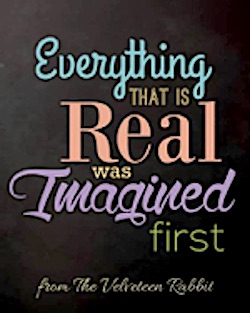Blog
Making The Impossible Seem Possible
Author: Kathleen Nelson-Simley
Posted: Wednesday - July 29, 2020
As a mom who raised two children I often thought about the many things I needed to be teaching them. Manners, kindness, empathy, volunteerism, hard work, resilience, teamwork, and of course, cleaning and hygiene. Hope was also high on my list of teachable items with my kids.
Hope is the feeling that what one desires WILL happen. Hope is a choice. It can be learned and shared. Best of all, it’s free and available to everyone. It doesn’t discriminate. If hope could speak, it would say, “The future will be better and I have the power to make it so!” With hope, we understand there are many paths to one goal, yet none of them are free of obstacles. Hope is the mindset that equips us to overcome those obstacles.
Hope, like oxygen, is essential to life. We simply can’t live without it. When we have it, it can carry us. When we don’t, it can suffocate us. It isn’t hard to see which kids are full of hope and which kids are grasping for it.
Hopeful kids are energetic and happier. They are more satisfied with life. They do better with things like academics and achievements in sports. Hopeful kids have better relationships. They can develop many strategies to reach goals and have backup plans should they face problems along the way. Obstacles are seen as challenges to overcome by seeking support and finding alternative strategies. They are more optimistic and they tell themselves, “I can do this. I won’t give up.” These students expect good outcomes and focus on success and because of it they experience greater positive affect. They are kids who don’t take failure personally. Instead, they use it to improve their performance next time.
In today’s world, hope isn’t just one of the things we need to impart to our kids. It is THE thing. Our kids are experiencing a mental health crisis today like nothing we’ve seen before. Living during a pandemic has created feelings of anxiety, stress, depression, isolation and hopelessness with an alarming number of kids.
The good news is that hope CAN BE cultivated even among students who are at risk for losing it. Developing hope is a process and kids who are currently hopeless can learn to be hopeful.
One of the first important steps in instilling hope with kids is to build a future focus with them. Encourage them to dream. Have them imagine their potential best selves. Let kids know that nothing is “off limits” for them to imagine for themselves in their future. Have them visualize a “big picture” for themselves and their future. Allow kids to draw pictures or write words that describe what they are visualizing. Have you ever heard that phrase, “If you can imagine it, then you can achieve it?” Let them imagine great BIG things for their future.
Imagination is powerful. Imagination creates your reality. What you imagine is what you believe to be true. What you believe to be true influences your actions. What you do creates your reality.
 Corrina is a young woman who spent nights sleeping in a dumpster in a parking lot as a teenager and imagined life someday with a purpose beyond dumpster living. She imagined what she wanted her life to become. Take a moment to listen to Corrina’s story and how the power of imagination and hope created a life she describes today as being “glorious and triumphant!”
Corrina is a young woman who spent nights sleeping in a dumpster in a parking lot as a teenager and imagined life someday with a purpose beyond dumpster living. She imagined what she wanted her life to become. Take a moment to listen to Corrina’s story and how the power of imagination and hope created a life she describes today as being “glorious and triumphant!”
Encouraging your kids to imagine a life of “what could be” can make the impossible seem possible. Corrina’s story is an example of this.
I recently came across the “Imagine Journals” from The Imagine Project and have fallen in love with them. There is a journal for kindergartners, kids, teenagers and even adults! They can help to set the stage for imagining with your students. They are downloadable PDFs with fillable space for your students to type in which makes them a great resource for virtual sharing.
Don’t let your kids’ story of “what was” or the current story of “what is” keep them from writing a new story of “what could be” in their future. Encouraging your kids to step outside themselves and imagine all the possibilities of “what could be” can have a powerful effect on “what becomes” in their future. Giving them the opportunity to imagine and write or re-write a new narrative to their story can move them from feeling anxious, stressed, lonely and sad to feeling hope and possibility!
There’s no downside to hope. With hope you believe tomorrow WILL be better. It makes your corner of the world seem better - especially during a pandemic. It makes the impossible seem possible.


 Corrina is a young woman who spent nights sleeping in a dumpster in a parking lot as a teenager and imagined life someday with a purpose beyond dumpster living. She imagined what she wanted her life to become. Take a moment to listen to Corrina’s story and how the power of imagination and hope created a life she describes today as being “glorious and triumphant!”
Corrina is a young woman who spent nights sleeping in a dumpster in a parking lot as a teenager and imagined life someday with a purpose beyond dumpster living. She imagined what she wanted her life to become. Take a moment to listen to Corrina’s story and how the power of imagination and hope created a life she describes today as being “glorious and triumphant!”